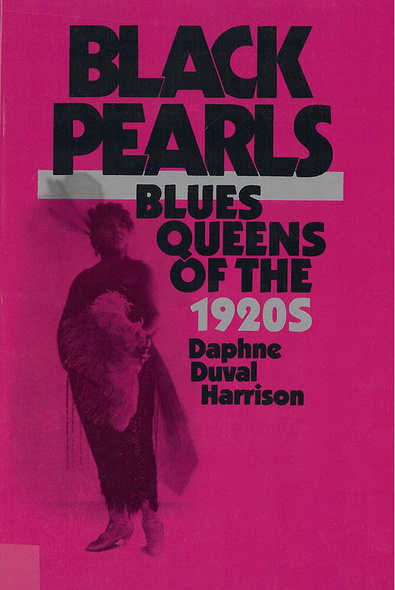Throughout the 1920s, in tents, theaters, dance halls and cabarets, and on "race" records, black American women captivated large audiences with their singing of the blues. University of Maryland professor Harrison examines the subjects and texts of their songs, the toll these performers paid for their right to be heard, and what they did to transform a folk tradition into a popular art. She describes the singing and lifestyles of Sippie Wallace, Victoria Spivey, Edith Wilson and Alberta Hunter to illustrate how they introduced a new model of the black woman: assertive and sexy, gutsy yet tender, bereft but not downtrodden, exploited but not resentful, independent yet vulnerable. The author shows that their choice of performing style, inflection, emphasis and improvisation provided a perspective and expressiveness that profoundly affected later American popular music. -- Publishers Weekly
Blues music spawned legendary performers whose influence has been felt in many musical forms here and around the world. Until now the important role of the great women blues singers has largely gone unexplored. This book tells of the cultural and social impact of the blues during the 1920s when the genre was dominated by women, both on stage and on record. Harrison (Afro-American Studies Department, University of Maryland) writes with authority, focusing particularly on Sippie Wallace, Edith Wilson, Victoria Spivey, and Alberta Hunter as she analyzes the music and the collective black experience out of which it grew. A significant book, particularly for collections of music history, black studies, and women's studies. -- Library Journal
Blues music spawned legendary performers whose influence has been felt in many musical forms here and around the world. Until now the important role of the great women blues singers has largely gone unexplored. This book tells of the cultural and social impact of the blues during the 1920s when the genre was dominated by women, both on stage and on record. Harrison (Afro-American Studies Department, University of Maryland) writes with authority, focusing particularly on Sippie Wallace, Edith Wilson, Victoria Spivey, and Alberta Hunter as she analyzes the music and the collective black experience out of which it grew. A significant book, particularly for collections of music history, black studies, and women's studies. -- Library Journal
List of Illustrations
Acknowledgments
Introduction
1. Riding "Toby" to the Big Time
2. "Crazy Blues" Starts a New Craze
3. "Wild Women Don't Have the Blues": Blues from the Black Woman's Perspective
4. "Up the Country..." and Still Singing the Blues: Sippie Wallace
5. Blue Was Her Business: Victoria Spivey
6. "He Used to Be Your Man..." But He's Edith Wilson's Now
7. She's Got a Mind to Ramble: Alberta Hunter
Conclusion
Other Blues Singers
Selected Blues Titles by Women
Notes
Glossary of Colloquialisms
Selected Discography
Bibliography
Subject Index
Index of Song Titles
Acknowledgments
Introduction
1. Riding "Toby" to the Big Time
2. "Crazy Blues" Starts a New Craze
3. "Wild Women Don't Have the Blues": Blues from the Black Woman's Perspective
4. "Up the Country..." and Still Singing the Blues: Sippie Wallace
5. Blue Was Her Business: Victoria Spivey
6. "He Used to Be Your Man..." But He's Edith Wilson's Now
7. She's Got a Mind to Ramble: Alberta Hunter
Conclusion
Other Blues Singers
Selected Blues Titles by Women
Notes
Glossary of Colloquialisms
Selected Discography
Bibliography
Subject Index
Index of Song Titles





